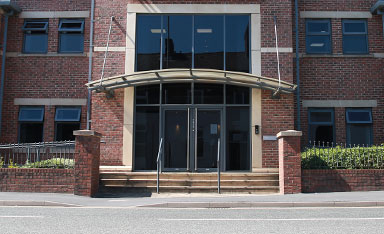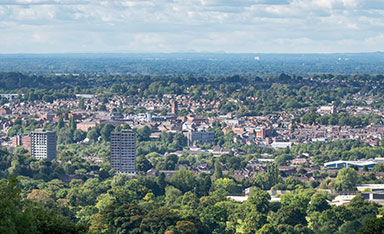Criteria for Business Property Relief
Any interest in a business can qualify for BPR as long as it meets certain criteria. This includes shares in a limited company or an interest in a partnership or a sole trader’s business. Other assets owned for the purpose of your business can also qualify, sometimes at a reduced rate of 50% subject to certain caveats.
Understanding if you qualify can be tricky, here are the top four criteria to consider:
- Minimum period of ownership
You must have owned the business interest for a minimum of two years.
One benefit of the legislation is that if you have sold your qualifying business, you can benefit from the relief by investing in a replacement business that qualifies for relief, even if you have not owned that new business for two years.
- How HMRC decides if a business qualifies for relief
Often businesses will have a mixture of assets used for trading and investments. The important point is that the business is not ‘wholly or mainly’ an investment business. For example, it must not consist wholly or mainly of the following:
- Dealing in securities, stocks or shares;
- Dealing in land or buildings; or
- Making or holding investments.
HMRC would usually consider the following five tests for the trading and investment elements of the business:
- Capital employed
- Time
- Turnover
- Profit
- Overall context
Considering all of these elements means that a trading business is allowed to, in some circumstances, own investments, such as a rental property or listed shares, provided the above tests favour the trading business. However, advice should be taken to ensure this is the case and if not, seek guidance on how to restructure the business so the relief is not lost.
- Will the value of the whole business qualify for relief?
Some assets will be excluded from BPR, even if the remainder of the value of the company qualifies for it. This is the case if the company has a large sum of cash or other assets not used for the purpose of the business which:
- Have not been used for the business throughout the two years before the transfer;
- Are not required for future use in the business.
It is a good idea to consider this on an annual basis and keep regular notes of the purpose of the assets, for example if it’s earmarked for a specific trading project, to maximise the relief.
- The business must not be subject to a binding contract for sale
Usually a binding contract for sale will be obvious, but there is a trap here where agreements are made for business interests to be dealt with in a particular manner on death.
For example, if a Shareholders Agreement states that on the death of one of the shareholders, the personal representatives must sell the shares to surviving shareholders, this could constitute a binding contract for sale. The effect would be that even if the shares qualified for Business Property Relief in every other way, the relief would be lost on death.
To achieve the same objective whilst still qualifying for relief, ‘put and call’ options can be put in place instead. It is sensible to review your documents to ensure that you do not inadvertently lose the relief.
When it comes to group companies, there are specific rules to consider so it’s important that they also seek legal advice.
For SME business owners, it is a good idea to have a regular ‘health check’ for your business to ensure it will qualify for BPR from inheritance tax. Look out for key indicators that may disqualify businesses from BPR such as a significant amount of investment activity or a large sum of cash in the business, or any agreements as to what happens on death that may restrict the relief.
No business should assume that it qualifies for 100% BPR, but reviewing the four points above should help you understand more about the criteria for qualification.
For more information on Business Property Relief, please contact Vicky Timothy in our Trusts team on 0161 475 1209 or email victoria.timothy@sasdaniels.co.uk.
Criteria for Business Property Relief
Any interest in a business can qualify for BPR as long as it meets certain criteria. This includes shares in a limited company or an interest in a partnership or a sole trader’s business. Other assets owned for the purpose of your business can also qualify, sometimes at a reduced rate of 50% subject to certain caveats.
Understanding if you qualify can be tricky, here are the top four criteria to consider:
- Minimum period of ownership
You must have owned the business interest for a minimum of two years.
One benefit of the legislation is that if you have sold your qualifying business, you can benefit from the relief by investing in a replacement business that qualifies for relief, even if you have not owned that new business for two years.
- How HMRC decides if a business qualifies for relief
Often businesses will have a mixture of assets used for trading and investments. The important point is that the business is not ‘wholly or mainly’ an investment business. For example, it must not consist wholly or mainly of the following:
- Dealing in securities, stocks or shares;
- Dealing in land or buildings; or
- Making or holding investments.
HMRC would usually consider the following five tests for the trading and investment elements of the business:
- Capital employed
- Time
- Turnover
- Profit
- Overall context
Considering all of these elements means that a trading business is allowed to, in some circumstances, own investments, such as a rental property or listed shares, provided the above tests favour the trading business. However, advice should be taken to ensure this is the case and if not, seek guidance on how to restructure the business so the relief is not lost.
- Will the value of the whole business qualify for relief?
Some assets will be excluded from BPR, even if the remainder of the value of the company qualifies for it. This is the case if the company has a large sum of cash or other assets not used for the purpose of the business which:
- Have not been used for the business throughout the two years before the transfer;
- Are not required for future use in the business.
It is a good idea to consider this on an annual basis and keep regular notes of the purpose of the assets, for example if it’s earmarked for a specific trading project, to maximise the relief.
- The business must not be subject to a binding contract for sale
Usually a binding contract for sale will be obvious, but there is a trap here where agreements are made for business interests to be dealt with in a particular manner on death.
For example, if a Shareholders Agreement states that on the death of one of the shareholders, the personal representatives must sell the shares to surviving shareholders, this could constitute a binding contract for sale. The effect would be that even if the shares qualified for Business Property Relief in every other way, the relief would be lost on death.
To achieve the same objective whilst still qualifying for relief, ‘put and call’ options can be put in place instead. It is sensible to review your documents to ensure that you do not inadvertently lose the relief.
When it comes to group companies, there are specific rules to consider so it’s important that they also seek legal advice.
For SME business owners, it is a good idea to have a regular ‘health check’ for your business to ensure it will qualify for BPR from inheritance tax. Look out for key indicators that may disqualify businesses from BPR such as a significant amount of investment activity or a large sum of cash in the business, or any agreements as to what happens on death that may restrict the relief.
No business should assume that it qualifies for 100% BPR, but reviewing the four points above should help you understand more about the criteria for qualification.
For more information on Business Property Relief, please contact Vicky Timothy in our Trusts team on 0161 475 1209 or email victoria.timothy@sasdaniels.co.uk.




